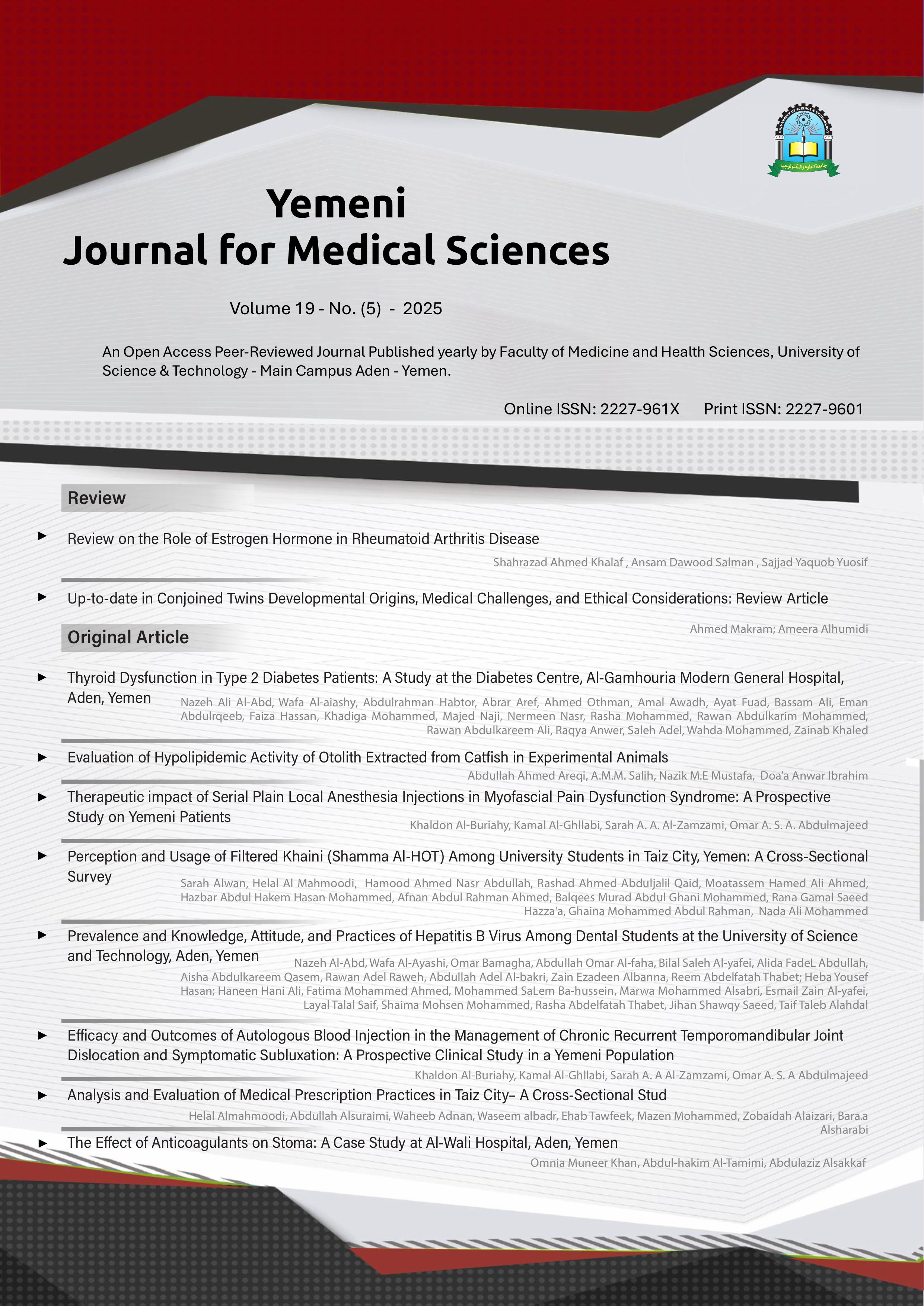Perception and Usage of Filtered Khaini (Shamma Al-HOT) Among University Students in Taiz City, Yemen: A Cross-Sectional Survey
##plugins.themes.bootstrap3.article.main##
Abstract
Objectives: This study explores the prevalence, awareness, and risks associated with using Filter Khaini (Shamma Al-HOT) among university and college students in Taiz, Yemen. It aims to assess the factors influencing its use and propose prevention strategies.
Methods: A cross-sectional study was conducted among 435 students, analyzing stimulant consumption patterns, awareness of health risks, and motivations for use. Data were collected via a structured questionnaire.
Results: The study found that 29.89% of students used stimulants, with Qat (62.30%) being the most consumed, followed by smoking (16.32%) and Shamma Al-HOT (11.49%). Over half (51.49%) of students had prior knowledge of Shamma Al-HOT, but 67.35% were unaware of its ingredients. Peer influence (17.93%) was a key initiation factor. Most students (54.71%) recognized its health risks, while 21.39% lacked awareness. Reported adverse effects included health issues (40%) and psychological effects (30.12%). Cancer (2.98%) and oral infections were noted risks. While 21.15% wished to quit, 15.86% felt addicted.
Conclusion: The study highlights the urgent need for awareness campaigns, stricter regulations, and accessible treatment centers to combat Shamma Al-HOT use. A multi-sectoral approach involving families, educational institutions, media, and law enforcement is essential for prevention and intervention.
##plugins.themes.bootstrap3.article.details##
stimulants, Shamma Al-HOT, smokeless tobacco (SLT), addiction, university & college, Yemen.

This work is licensed under a Creative Commons Attribution 4.0 International License.
YJMS publishes Open Access articles under the Creative Commons Attribution (CC BY) license. If author(s) submit their manuscript for consideration by YJMS, they agree to have the CC BY license applied to their work, which means that it may be reused in any form provided that the author(s) and the journal are properly cited. Under this license, author(s) also preserve the right of reusing the content of their manuscript provided that they cite the YJMS.








